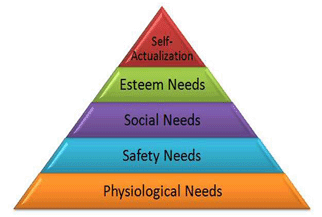Classical Theories of Motivation
April 3, 2025
 Classical Theories of Motivation
Classical Theories of Motivation
The motivation concepts were mainly developed around 1950’s. Three main theories were made during this period. These three classical theories are- Maslow’s hierarchy of needs theory Herzberg’s Two factor theory Theory X and Theory Y These theories are building blocks of the contemporary theories developed later. The working mangers and learned professionals till date use…
 Why Intrinsic Motivation Matters More Now In the Times of the Great Resignation
Why Intrinsic Motivation Matters More Now In the Times of the Great Resignation
What is Intrinsic Motivation and how does it tie in with the Great Resignation? Among the different types of motivation, Intrinsic Motivation, or the ability of individuals to motivate themselves according to their inner needs and higher selves, matters more than ever in the present Post Pandemic Times. This is because due to WFH or…
 Workplace Motivation – Carrot or Stick approach doesnt work anymore
Workplace Motivation – Carrot or Stick approach doesnt work anymore
“I am in this job because I have no other option.” If this is what an employee of your company feels, read on to know how this statement can be changed to something more positive – “I love what I do.” First things first – whose responsibility is it to ensure that an employee loves…
Abraham Maslow is well renowned for proposing the Hierarchy of Needs Theory in 1943. This theory is a classical depiction of human motivation. This theory is based on the assumption that there is a hierarchy of five needs within each individual. The urgency of these needs varies. These five needs are as follows-
According to Maslow, individuals are motivated by unsatisfied needs. As each of these needs is significantly satisfied, it drives and forces the next need to emerge.
Maslow grouped the five needs into two categories - Higher-order needs and Lower-order needs.
The physiological and the safety needs constituted the lower-order needs. These lower-order needs are mainly satisfied externally. The social, esteem, and self-actualization needs constituted the higher-order needs. These higher-order needs are generally satisfied internally, i.e., within an individual. Thus, we can conclude that during boom period, the employees lower-order needs are significantly met.
 FIGURE: Maslow’s Need Hierarchy Model
FIGURE: Maslow’s Need Hierarchy Model | As far as the physiological needs are concerned, the managers should give employees appropriate salaries to purchase the basic necessities of life. Breaks and eating opportunities should be given to employees. |
 | As far as the safety needs are concerned, the managers should provide the employees job security, safe and hygienic work environment, and retirement benefits so as to retain them. |
 | As far as social needs are concerned, the management should encourage teamwork and organize social events. |
 | As far as esteem needs are concerned, the managers can appreciate and reward employees on accomplishing and exceeding their targets. The management can give the deserved employee higher job rank/position in the organization. |
 | As far as self-actualization needs are concerned, the managers can give the employees challenging jobs in which the employees’ skills and competencies are fully utilized. Moreover, growth opportunities can be given to them so that they can reach the peak. |
The managers must identify the need level at which the employee is existing and then those needs can be utilized as push for motivation.
Your email address will not be published. Required fields are marked *